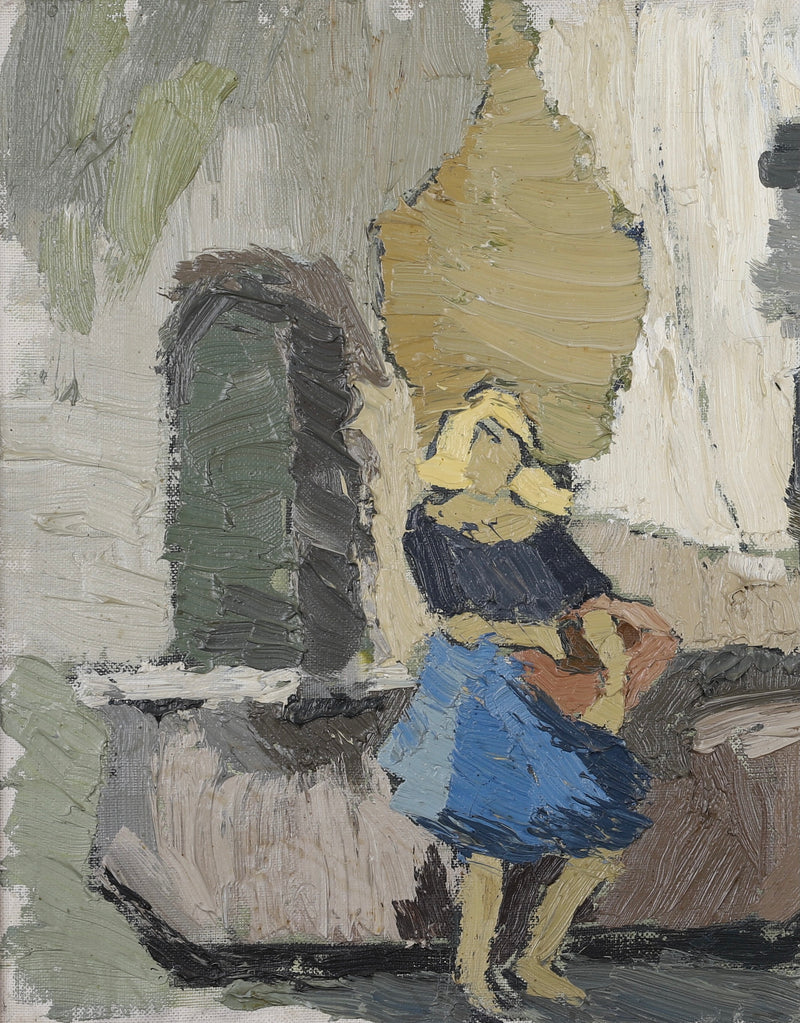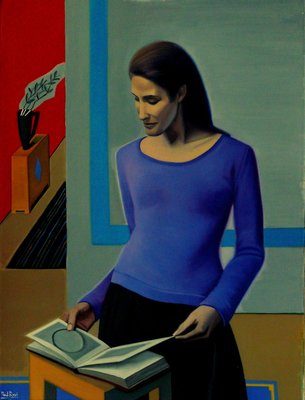Discover the very best Tips for Creating Stunning Figurative Oil Painting Artwork
Discover the very best Tips for Creating Stunning Figurative Oil Painting Artwork
Blog Article
Mastering the Art of Figurative Oil Painting: Essential Tips and Techniques for Aspiring Artists
Figurative oil paint represents an intricate crossway of method and interpretation, demanding a complete comprehension of human anatomy, make-up, and shade theory. An exploration of color consistency and texture methods can significantly boost the visual impact of their job.

Understanding Human Makeup
Comprehending human makeup is basic for any kind of musician aiming to grasp metaphorical oil painting. A thorough grasp of the human form allows musicians to produce lifelike depictions that reverberate with audiences. Understanding of physiological structures, such as muscular tissues, joints, and bones, gives vital understanding right into exactly how the body actions and poses.
Musicians need to acquaint themselves with the proportions of the human figure, including the relationship in between various body components and just how these proportions vary throughout sexes and ages. This recognition enables accurate scaling and viewpoint in their work. Furthermore, recognizing the underlying musculature enhances the ability to show motion and tension in a number, resulting in a much more vibrant and compelling composition.
Examining anatomy also assists in identifying subtle nuances in pose and expression, which are important for conveying feeling and narrative within a paint. Resources such as anatomical textbooks, life drawing sessions, and on-line tutorials can be indispensable devices for musicians looking for to grow their physiological expertise. Inevitably, grasping human anatomy not just improves technical ability but likewise improves an artist's creative vision, enabling them to bring their figurative oil paintings to life with credibility and deepness.
Significance of Structure

Secret principles of composition include balance, unity, and prime focus. Attaining equilibrium ensures that no single component bewilders the others, while unity develops a feeling of harmony throughout the item. Centerpieces accentuate considerable aspects of the artwork, allowing visitors to involve with the narrative or style a lot more deeply.
Additionally, making use of leading lines and the regulation of thirds can significantly boost structure. Leading lines normally assist the audience's stare via the painting, while the regulation of thirds provides a structure for putting crucial elements in a visually appealing way. By grasping make-up, striving artists can raise their figurative oil paintings, transforming them into compelling aesthetic stories that reverberate with their audience.
Learning Shade Theory
Shade concept functions as a fundamental element of metaphorical oil painting that complements the principles of structure. Understanding the shade wheel, that includes main, secondary, and tertiary shades, is essential for creating harmonious schemes and efficient visual narratives.
Secret ideas such as hue, saturation, and value play a vital duty in identifying the mood and impact of a paint. Artists must explore amazing and cozy shades to stimulate particular feelings; warm shades often communicate power and enthusiasm, while great shades can convey peace and peace.
The relationship in between corresponding colors-- those contrary each various other on the shade wheel-- can develop striking contrasts and dynamic compositions. When compared, these shades enhance each other's vibrancy, attracting the customer's eye and adding deepness to the art work.
In addition, understanding similar colors enables musicians to achieve a sense of unity and coherence. By selecting other colors that are nearby on the wheel, one can keep a balanced ambience throughout the piece.
Eventually, grasping shade concept outfits aspiring musicians with the tools required to control color deliberately, boosting their capability to share emotion and narrative through figurative oil painting. figurative oil painting.
Methods for Appearance
A variety of techniques can effectively produce appearance in metaphorical oil paint, adding deepness and dimension to the artwork. One fundamental technique is using impasto, where thick layers of paint are put on the canvas, permitting for a three-dimensional high quality. This method enhances light communication, producing dynamic visual interest.
One more method is scumbling, which includes using a slim layer of lighter paint over a dried out darker layer. This method allows the underlying shade to show through, leading to a soft, textured result that can stimulate a feeling of atmosphere or age. Dry brushing is additionally vital; using a completely dry view publisher site brush with very little paint, artists can create fragile appearances and great lines, ideal for catching the nuances of skin or textile.
Additionally, combination blades can be used to use or scratch paint, producing one-of-a-kind patterns and appearances. Try out different devices and materials, such as sponges or cloths, can even more enrich the textural quality of a paint. Ultimately, understanding these techniques calls for practice and experimentation, permitting musicians to find the varied tactile high qualities that can boost their metaphorical jobs.
Developing Your Unique Design
A musician's one-of-a-kind style is usually the end result of individual experiences, influences, and methods sharpened over time. Developing this originality in figurative oil paint calls for a conscious initiative to explore both your psyche and the broader creative landscape. Begin by assessing the themes and topics that reverberate with you emotionally; your interest will infuse authenticity right into your job.
Research study various designs and movements, but as opposed to mimicing, remove aspects that speak to you - figurative oil painting. Trying out various techniques, color combinations, and compositions, enabling yourself the liberty to play without right here the stress of perfection. Maintain a sketchbook or journal to record your ideas, ideas, and artistic progression; this will work as a useful source for recognizing repeating choices and themes
Seek positive responses from peers or coaches, as they can supply understandings that illuminate elements of your work you might neglect. Attend workshops and events, submersing on your own in the art area to further fine-tune your viewpoint. Be client with yourself; the journey of creating an unique style is recurring, evolving with each brushstroke and every canvas you encounter. Welcome the process as long as the result, and your unique voice will certainly emerge.

Conclusion
Mastering figurative oil painting necessitates an extensive understanding of human makeup, structure, and shade concept. The assimilation of these components not only boosts technical skills yet additionally boosts the psychological vibration of the art work. In addition, the expedition of structure strategies adds to a richer visual experience. Ultimately, the growing of a distinct design with continuous method and representation is important for artistic innovation. Welcoming these fundamental concepts will dramatically profit striving artists on their innovative journey.
Figurative oil paint represents a complex crossway of technique and interpretation, requiring an extensive understanding of human composition, composition, and shade concept. An exploration of color consistency and texture techniques can dramatically boost the aesthetic effect of their job. By understanding structure, striving musicians can elevate their metaphorical oil paints, transforming them right into engaging aesthetic tales that reverberate with their target market.
Experiment with different methods, shade schemes, and compositions, enabling on your own the liberty to play without the stress of excellence.Understanding figurative oil paint necessitates a comprehensive grasp of human anatomy, structure, and shade concept.
Report this page